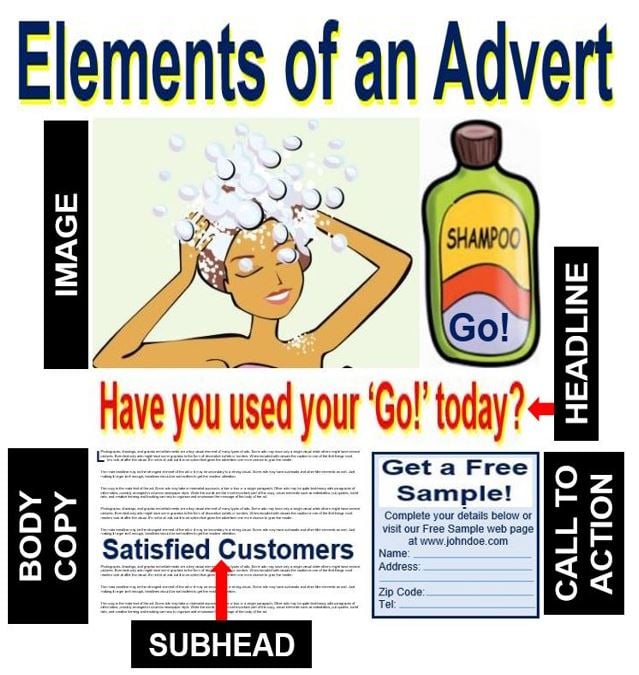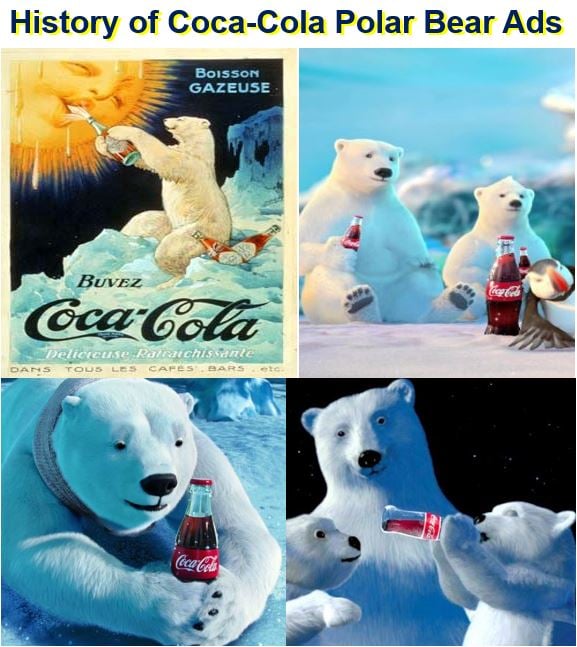Advertising is the business of drawing people’s attention to a good or service. It is a public promotion of a product, service, cause, or a movement. The promotion is done through an advertisement (advert or ad) via the media – TV, Internet, newspapers, radio, trade journals, movie theaters, or billboards. Additionally, adverts appear on store windows, restaurant placemats, sporting arenas, the side of vehicles, and the side of buildings.
Advertising is usually delivered with a short film, sound recording (radio), or written notice that is presented to people. Most importantly, the aim is to encourage consumers to buy something or act in a specific way.
Put simply; advertising is about telling people publicly about a good or service. Above all, the aim is to persuade people to buy something, do something, or think in a specific way. We call the process of influencing people’s perception of something impression management.
Scheduling options
Advertisers have three ‘scheduling’ options:
- Continuous.
- Flighting.
- Pulsing.
Flighting occurs when there is one season with lots of ads, the next season with no ads, and so on.
Pulsing is like flighting, but there is a low advertising season rather than an empty one.
Advertising is a marketing tactic
It is a marketing tactic that involves paying for space to promote a product or service. Additionally, the purpose could be to promote a cause or movement. Advertisers choose the medium most likely to hit their target audience.
For example, businesses advertise in a gardening magazine to promote a lawn mower rather than in a hairdressing journal.
According to the American Marketing Association, advertising is:
“The placement of announcements and persuasive messages in time or space purchased in any of the mass media by business firms, non-profit organizations, government agencies, and individuals who seek to inform and/ or persuade members of a particular target market or audience about their products, services, organizations, or ideas.”

There are five main elements of an advert. First, the headline. Second, the subhead. Third, the body copy. Fourth, the image. And finally, a call to action.
In some companies, advertising is part of the marketing department. Within others firms, it is a separate unit. Some businesses contract out advertising to agencies rather than doing it in-house.
Purpose of advertising
We all understand why companies advertise. However, explaining what its purpose is in words is not so easy. Companies mainly advertise:
- To make consumers aware of a product or service.
- As a way of convincing consumers that a product or service is just what they need.
- To generate desire for something.
- When they try to make people view a company favorably. In other words, when they want to enhance the company’s image.
- When the aim is to tell people about new goods or services.
- To back up sales people’s messages.
- To trigger a response. For example, to get consumers to request a sample, seek more information, or order something.
- A way to direct consumers in the company’s direction.
Creating effective adverts
In any type of advert, even business-to-business ones, the aim is to convince the viewer. Specifically, the advertiser wants to persuade the viewer to choose a product or service over another. To effectively accomplish this, the ad must have five main components:
Headline
The headline is a phrase advertisers use to attract attention. Famous ones include:
- “How to win friends and influence people.”
- “Want milk?”
- “How I improved my memory in one evening.”
- “Where’s the beef?”
Subhead
The subhead, or sub-headline, is a headline of its own but on a smaller scale. It elaborates on the headline to pull the reader into the advert even more.
The headline is similar to the hook in fishing. Likewise, the subhead reels in the prey.
Body copy
The body copy is the main part of the ad. Specifically, it is the part that provides the ‘meat’ of the communication. It is created by a professional copywriter. The copywriter describes the features and benefits of the product or service in this part of the advert.
Features are the characteristics and functions of a product. Benefits answer the following customer’s question: “What’s in it for me?”
Image
Almost every type of advert includes a photograph or image. The image illustrates the key benefits of the product. Only radio ads never have images.
Call to action
A ‘call to action’ is an instruction to the viewer to do something. It usually contains an imperative phrase such as ‘find out more,’ ‘visit a store today,’ ‘request a free sample,’ or ‘call now.’
The call-to-action (CTA) might be a simple non-demanding request like ‘watch this video’ or ‘choose a color.’
Some marketing strategies combine a series of small CTAs. These CTAs create a pattern of behavior that makes it easier for the viewer to follow through with just one last CTA.
A ‘marketing strategy’ is a company’s marketing goals and objectives combined into one comprehensive plan.

Adverts today are quite different compared to sixty or one hundred years ago. No ad today would have Santa Claus promoting the benefits and pleasures of cigarette smoking!
Advertising is not cheap. In fact, advertising experts say that it is one of the most expensive marketing strategies. That is why it is more commonly used by large companies and brands than small commercial enterprises.
Your target customer
Not only does an advert need to be good, but it also needs to target the right audience. When trying to determine who to aim an advert at, we need to consider certain demographic features.:
- age
- gender
- academic level
- socioeconomic level (income level)
- zip code (UK and many other countries: post code)
In fact, we can find out quite a lot about people today if we are willing to pay for the information. Some agencies can provide lists of people according to their purchases, certain preferences, or whether or not they have children. We can even aim advertising at consumers who live in certain types of property.
The more precisely you can define who your target consumer is, the better and more effective your advertising vehicles will be. With good and effective advertising you will reach more of your target customers for less expenditure.
When promoting a taxi service in a suburb, promoters would not place an expensive ad in the Wall Street Journal. They would advertise in the local papers and shop windows. They would also consider announcing in a local radio station. Advertisers would get better results if they placed ads on roadside billboards rather than a nationwide newspaper.

According to the Coca-Cola Company, it first used the Polar Bear in advertising in France in 1922.
Advertising – ancient history
Advertising has been around for several thousand years. The ancient Egyptians used papyrus to make wall posters and send sales messages. Papyrus is a thick type of paper made from the pith of the papyrus plant.
Archaeologists have unearthed political campaign displays and commercial messages in the ruins of ancient Arabia and Pompeii. In Ancient Greece and Rome, lost and found adverts on papyrus were common.
Rock or wall painting for commercial advertising is a marketing strategy that dates back to 4000 BC. Anthropologists and historians have discovered this type marketing approach in many parts of South America, Africa, and Asia.
From the 11th to 7th centuries BC in ancient China, merchants played bamboo flutes to sell candy.
As cities started to grow in the Middle Ages in Europe, adverts promoting specific trades began to emerge. Blacksmiths, tailors, and cobblers started advertising their services.
As most people at that time were illiterate, images were used instead of words. A tailor’s image was a suit, a jeweler’s was a diamond, and a horse shoe represented a blacksmith.
City squares had carts and wagons from which sellers sold fruits and vegetables. Their proprietors used town criers to walk up and down announcing where they were and what they sold.
Advertising – modern history
In 18th century Britain, adverts started appearing in weekly newspapers. Businesses used these early print ads to promote newspapers, books, and medications.
As false advertising started to grow, the authorities began to introduce advertising regulations.
Thomas James Barratt (1841-1914), chairman of the soap manufacturer A&F Pears, was a pioneer of brand marketing. In fact, Barrat is known today as ‘the father of modern advertising.’ He created a very effective advertising campaign for his company’s soaps. His ads used target phrases, images, and slogans.
Barratt’s phrase – “Good morning. Have you used Pears’ soap?” – became famous. In fact, the phrase prevailed right into the 20th century.
As the global economy expanded during the 19th century, so did advertising. In the United States, mail-order advertising emerged and grew rapidly.
Advertising – Radio and TV
The first radio stations appeared in the early 1920s. Retailers and radio equipment manufacturers set up the first stations. Non-commercial organizations, including clubs, civic groups, and schools soon followed.
It was not long before single businesses would sponsor specific programs. At the beginning and end of the show, an announcer would mention the sponsor’s name.
Radio station owners soon learned that they could increase their earnings by selling short slots to multiple businesses throughout the day. In other words, they could make money before, during, and after their shows. TV advertising took off in the 1950s.
In the 1980s and early 1990s cable TV, and particularly MTV became huge vehicles for advertisers. Some specialty TV channels appeared, including the Home Shopping Network, QVC, and ShopTV Canada.
Advertising – the Internet
The Internet has changed how advertisers allocate their budgets during the 21st century. When the ad server came onto the scene, online advertising exploded. The ad server contributed to the dot-com boom of the late 1990s.
Since the beginning of this century, search engine Google and social networking giant Facebook have dominated online advertising.
To sponsor is similar to advertising, but it is not the same. Sponsorship does not mention the specific attributes of a product. Moreover, unlike advertising, sponsorship cannot stand alone.
